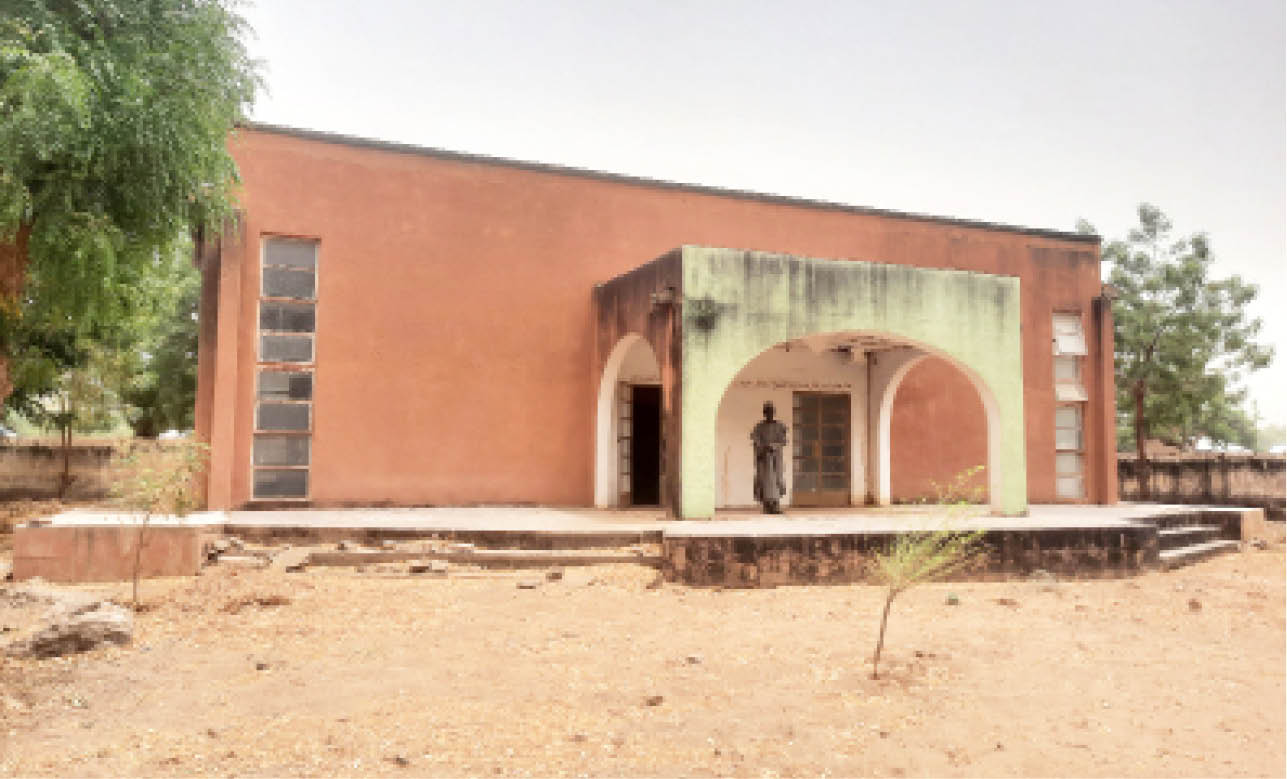Located about a kilometre off the Gombe-Kano highway, near a river on a hilly area, is a town called Gombe-Abba, established about 200 years ago by Modibbo Bubayero, a disciple of Islamic Reformer, late Sheikh Usman Ibn Fodio. Daily Trust Saturday visited the town established in 1824 as the first capital of Gombe Emirate established in 1804 after the Jihad, and reports on how the historical town was neglected.
The status of Gombe as the capital of Gombe State would probably have been bestowed on Gombe-Abba, once a prosperous town but now a sleepy village located some 100 kilometres from the present Gombe town.
With the conquest of Gombe Emirate in 1903 by the British colonialists, the then Emir of Gombe, Umaru Kwairanga (1898-1922) was ordered to relocate from Gombe-Abba, a town established by his grandfather and founder of Gombe Emirate, Modibbo Bubayero.
He was first ordered to relocate to Nafada in 1913 and subsequently to the present Gombe in 1919.
According to oral history, when the colonialists conquered Gombe-Abba during the reign of Emir Umaru, who submitted peacefully, they found Gombe-Abba to be too isolated and made administration of the new division difficult for them.
The British therefore moved their administrative headquarters to Nafada town in 1913 and ordered the emir to do same.

However, after just six years in Nafada, the colonialists again ordered Emir Umaru to relocate to the south of Nafada, to the present Gombe town, which is to make it easier for the British to effectively manage the people of Tangale-Waja and Dadiya, located in southern Gombe.
With the departure of Emir Umaru and his entire cabinet alongside the British colonialists to Nafada, the unfortunate destiny of Gombe-Abba was sealed and the town began to crumble.
The emir left alongside all the prominent and important figures of the emirate, he only left behind his eldest son, Yarima Mazadu, to look after a handful of households that chose to stay behind.
Thus, Gombe-Abba, which was hitherto the seat of the entire Gombe Emirate, was reduced to a mere village, with only village heads administering the once popular and prosperous town.
Before the relocation of the Gombe Emirate to its present location in Gombe, seven emirs, including the founder, Modibbo Bubayero, had ruled the emirate from Gombe-Abba.
The seven emirs that ruled in Gombe-Abba town are; Bubayero who ruled from 1824 when he established the town until his death in 1841. He was buried in his palace few metres away from the central mosque.
He was succeeded by his first son, Emir Sulaiman (1841-1844) who spent just three years on the throne; he died in Kano on his way to Gombe-Abba from Sokoto, and was buried there. He was succeeded by his brother, Emir Muhammad Kwairanga (1844-1882) who reigned for 38 years and was buried near his father’s tomb.
Kwairanga was succeeded by his surviving eldest son, Emir Abdulkadir Zailani (1882-1888) in 1882. He died after six years on the throne; he was buried in Birin Bolewa.
Zailani was succeeded by his brother, Emir Hassan (1888-1895) who died after ruling for only seven years, he was buried in Dukku.
The next emir that ruled in Gombe-Abba was Emir Tukur (1895-1898), who was actually the last emir to administer Gombe as the component of the Sokoto Caliphate; he died after just three years reign and was buried near his father and grandfather’s tomb.
Thus, Emir Umaru (1898-1922) who succeeded Emir Tukur was the last emir to rule from Gombe-Abba, it was during his reign that the British subdued Gombe emirate and ordered him to relocate to Nafada and afterward to Gombe.
The town of Gombe-Abba
A resident of Gombe-Abba, 75-year-old Malam Haruna Mohammed, told Daily Trust Saturday how the town was founded by late Modibbo Bubayero, the founder of the Gombe emirate.
According to him, as narrated by their grandparents, when Bubayero came to the area that became Gombe-Abba, he met a with his family atop a hill in the eastern part of the town. “The man came down from the hill to join Bubayero and they built the town, thus the town derived its name from the man Gombe and Abba, short form of Abubakar.”
He said the town, located about 100 kilometres north of the present Gombe city, was founded in 1824 by late Modibbo Bubayero after he subdued several towns and villages of present Gombe, Akko, Deba, Yamaltu, Dukku, Funakaye and Nafada emirates.
He said: “Prior to settling in Gombe-Abba, Bubayero had stayed in several places that served as camps for his numerous military campaigns to establish the Gombe emirate, which in the past had stretched to the present Muri emirate in Taraba State.
“After living in Dukku for several years, Bubayero decided to have a permanent place that will serve as the befitting capital for his emirate, thus Gombe-Abba on the Gongola River, west of Dukku, was selected.
“Therefore, Gombe-Abba was founded in 1824 with strong city walls, popularly known as Ganuwa, erected.
Muhammad further stated that, “There were seven gates (Ganuwa) surrounding the town – Kofar Madi at the west; Kofar Tara at the north-west, Kofar Wulgu at the north-east. At the east were Kofar Hinna and Kofar Siratijo, at the south was Kofar Bordo Fiti and at the south-west, Kofar Kanoma.”
“The town served as the emirate capital until 1913 when the colonialists, having conquered the emirate, ordered its transfer to Nafada and subsequently to the present Gombe in 1919,” he concluded.

Bubayero’s tomb
Sixty-eight-year-old Malam Muhammad Bolewa man called Gombe, who was living Musa is the custodian of the Modibbo Bubayero tomb.
The grave site – located at the eastern part of the town; at the exact place that used to be the emir’s former palace, is in the middle of a walled structure accessible through two entrances.
The building, which houses the tombs, is always under lock and key. The three tombs are that of Modibbo Bubayero, his son Emir Muhammad Kwairanga and grandson Emir Muhammad Tukur.
According to Malam Musa, the tomb site was reconstructed during the reign of the ninth Emir of Gombe, Malam Abubakar Umar (1936-1984).
The site is open to visitors who occasionally visit the place from within and outside the state, to offer prayers to the deceased monarchs.
Why Bubayero chose remote Gombe-Abba as Emirate headquarters
It was said that Bubayero chose Gombe-Abba as the capital of the emirate due to its proximity to the Gongola River which allows for adequate water supply for human consumption, agricultural activities and livestock development.
Also, the river makes access to the town from the north-west very difficult, and the hill located in the south-eastern part was a natural barrier which added to the security of the town.
After building his palace and wall around Gombe-Abba, Bubayero was said to never go out of Gombe-Abba until his death at the age of 81 in 1841; he reigned for 37 years from 1804 to 1841.
He was succeeded by his first son, Sulaiman (1841-1844) who died in Kano at the age of 54 after just three years reign. He died without leaving a child; therefore, he had no descendant in the dynasty of Gombe Emirate.
Emir Sulaiman was survived by his younger brother, Muhammadu Kwairanga the third child of Bubayero, who all the subsequent emirs of Gombe traced their origins to (Kwairanga). The present Emir of Gombe, Abubakar Shehu Abubakar III, is his great-great grandson.

Departure of Emir Umaru and ruin of Gombe-Abba
According to retired Justice Usman Baba Liman, a retired Grand Khadi of Gombe State and Chief Imam of Gombe-Abba, the underdeveloped of the town could be trace to abandoning the town by all the important figures when Emir Umaru left in 1913.
He said when the British ordered the emir to relocate, all the important personalities in the town followed him, “and instead of leaving one of the district heads behind, Yarima Mazadu, a son of the emir, was left with a title of a village head.
“We believe these have negatively contributed to the neglect of the town by all the subsequent emirs, as well as military and civilian administrations that have ruled the present Gombe State.
He added that the absence of educational institutions also contributed to their underdevelopment.
“For instance, there are only two schools in the town – a primary and secondary school each. We have only one Primary Health Care centre, which cannot cater for the people without adequate personnel to man the hospital.
“Also, the clinic cannot handle complicated cases, pregnant women and other patients with critical condition have to be taken to another ill-equipped General Hospital in Dukku, a distance of about 20 kilometres.
“The first Jumu’at mosque is still made of clay without a permanent structure. Even that one was reconstructed by the late Emir Abubakar Umar, who died about 40 years ago,” he added.
Baba Liman lamented that their children are dropping out of school due to lack of space and poor quality of the schools.
He said: “Most of the children are just roaming the streets, especially the girl-children who are married off at a very early age. Some that were lucky to acquire NCE or even first degree are still without jobs, a situation that discourage others from furthering their education.
“The major occupations of our people are fishing, farming of grains such as millet, beans and guinea corn in large quantity.”
Our correspondent observed that there is no single police outpost in the town. For the over 25, 000 people living in Gombe-Abba and surrounding villages, only one policeman assisted by two constables are policing the entire area.
In the area of social amenities, there is no single tarred road in the whole town and thousands of residents depend heavily on five boreholes and the river for water supply.

 Join Daily Trust WhatsApp Community For Quick Access To News and Happenings Around You.
Join Daily Trust WhatsApp Community For Quick Access To News and Happenings Around You.


